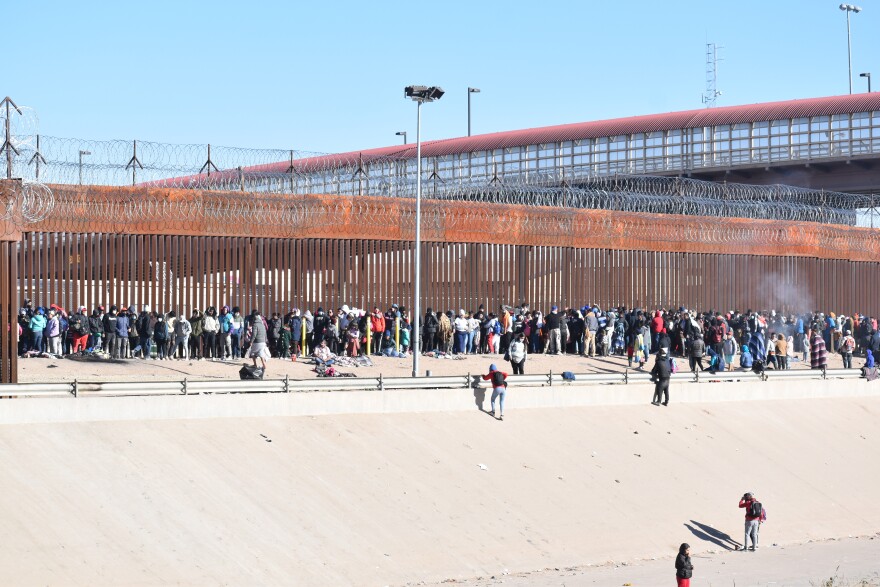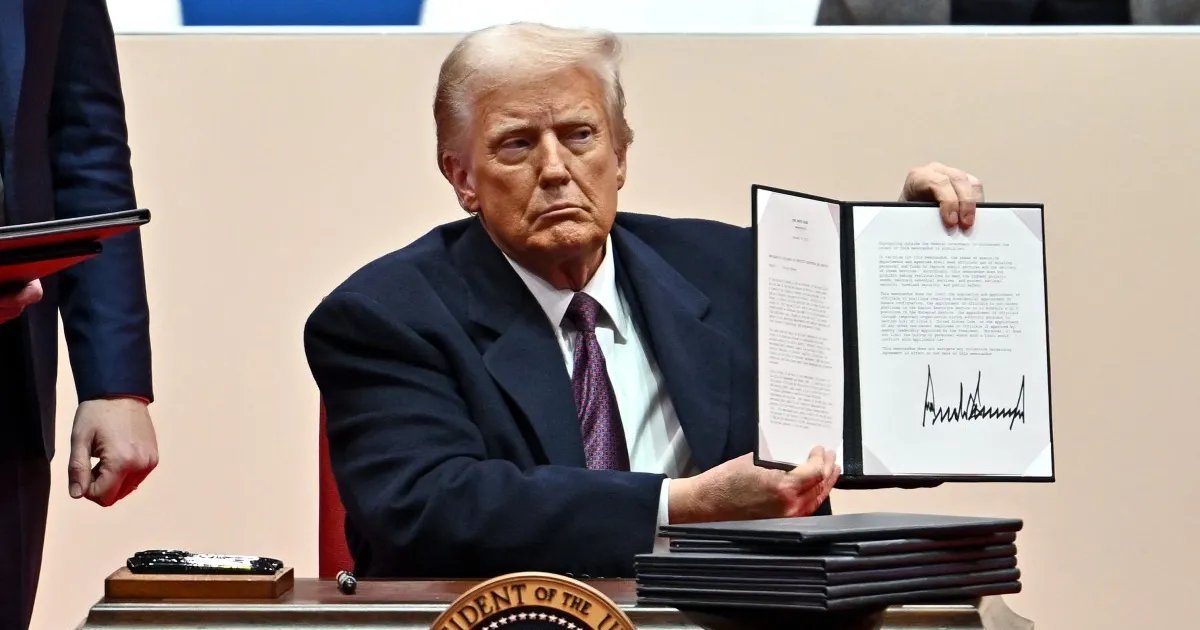🧵OPERATION DOGE: 31 DIVISIONS REWIRING FEDERAL EFFICIENCY
DOGE, established by Trump and led by Elon, is a temporary organization under the United States Digital Service.
Its mission is to audit federal agencies, reduce government spending, eliminate inefficiencies, and restructure operations.
Since its inception, DOGE has initiated significant reforms across various federal departments, aiming to streamline processes and cut costs.
DOGE currently includes 31 divisions organized across 6 core sectors:
Financial Operations (5 divisions): IRS, Treasury, SEC, SBA, Commerce
Security & Justice (6 divisions): DOJ, DHS, DOD, FBI, FEMA, Coast Guard
Infrastructure & Transportation (4 divisions): DOT, FAA, FCC, GSA
Health & Social Services (5 divisions): HHS, VA, SSA, HUD, Education
Environmental & Resources (6 divisions): Interior, EPA, DOE, USDA, NPS, NSF
Administrative & Oversight (5 divisions): OMB, OPM, DOL, FTC, FDA
Let's dive into how each DOGE division can revolutionize federal operations.
Source: @DOGE
DOGE, established by Trump and led by Elon, is a temporary organization under the United States Digital Service.
Its mission is to audit federal agencies, reduce government spending, eliminate inefficiencies, and restructure operations.
Since its inception, DOGE has initiated significant reforms across various federal departments, aiming to streamline processes and cut costs.
DOGE currently includes 31 divisions organized across 6 core sectors:
Financial Operations (5 divisions): IRS, Treasury, SEC, SBA, Commerce
Security & Justice (6 divisions): DOJ, DHS, DOD, FBI, FEMA, Coast Guard
Infrastructure & Transportation (4 divisions): DOT, FAA, FCC, GSA
Health & Social Services (5 divisions): HHS, VA, SSA, HUD, Education
Environmental & Resources (6 divisions): Interior, EPA, DOE, USDA, NPS, NSF
Administrative & Oversight (5 divisions): OMB, OPM, DOL, FTC, FDA
Let's dive into how each DOGE division can revolutionize federal operations.
Source: @DOGE

1. DOGE GSA: BRINGING INNOVATION TO GOVERNMENT OPERATIONS
The General Services Administration manages government buildings, real estate, and procurement to support federal agencies efficiently.
DOGE GSA could transform the agency by:
Streamlining real estate and cutting costs by reducing federal leases.
Implementing AI-driven procurement and supply chain optimization.
Expanding shared services across agencies to eliminate redundancy.
Source: @DOGE_GSA
The General Services Administration manages government buildings, real estate, and procurement to support federal agencies efficiently.
DOGE GSA could transform the agency by:
Streamlining real estate and cutting costs by reducing federal leases.
Implementing AI-driven procurement and supply chain optimization.
Expanding shared services across agencies to eliminate redundancy.
Source: @DOGE_GSA

2. DOGE STATE: MODERNIZING DIPLOMACY AND GLOBAL ENGAGEMENT
The State Department manages U.S. foreign policy, diplomatic relations, and international engagement.
Estimated annual budget: $58 billion
DOGE State could revolutionize the department by:
Implementing AI systems for rapid diplomatic analysis and intelligence.
Digitizing embassy operations for efficient remote negotiations.
Automating passport services to reduce processing times.
Source: @DOGE_STATE
The State Department manages U.S. foreign policy, diplomatic relations, and international engagement.
Estimated annual budget: $58 billion
DOGE State could revolutionize the department by:
Implementing AI systems for rapid diplomatic analysis and intelligence.
Digitizing embassy operations for efficient remote negotiations.
Automating passport services to reduce processing times.
Source: @DOGE_STATE

3. DOGE SBA: EMPOWERING SMALL BUSINESS GROWTH
The Small Business Administration supports entrepreneurs and small businesses across America.
Estimated annual budget: $1.4 billion
DOGE SBA could enhance operations through:
Digital transformation of loan processing and approvals.
AI-powered risk assessment for expanded microlending.
Simplified regulatory compliance for new businesses.
Source: @DOGE_SBA
The Small Business Administration supports entrepreneurs and small businesses across America.
Estimated annual budget: $1.4 billion
DOGE SBA could enhance operations through:
Digital transformation of loan processing and approvals.
AI-powered risk assessment for expanded microlending.
Simplified regulatory compliance for new businesses.
Source: @DOGE_SBA

4. DOGE INTERIOR: OPTIMIZING FEDERAL LAND MANAGEMENT
The Department of Interior oversees federal lands, natural resources, and native affairs.
Estimated annual budget: $35 billion
DOGE Interior could improve efficiency by:
Strategic disposition of excess federal properties.
AI-enhanced conservation and resource monitoring.
Smart contract implementation for resource leasing.
Source: @DOGE_DOI
The Department of Interior oversees federal lands, natural resources, and native affairs.
Estimated annual budget: $35 billion
DOGE Interior could improve efficiency by:
Strategic disposition of excess federal properties.
AI-enhanced conservation and resource monitoring.
Smart contract implementation for resource leasing.
Source: @DOGE_DOI

5. DOGE NPS: MODERNIZING AMERICA'S PARKS
The National Park Service preserves natural and cultural resources across park systems.
Estimated annual budget: $3.12 billion
DOGE NPS could improve service delivery by:
Implementing automated maintenance and visitor support.
Conducting efficiency-focused expenditure reviews.
Developing smart ticketing and revenue systems.
Source: @DOGE_NPS
The National Park Service preserves natural and cultural resources across park systems.
Estimated annual budget: $3.12 billion
DOGE NPS could improve service delivery by:
Implementing automated maintenance and visitor support.
Conducting efficiency-focused expenditure reviews.
Developing smart ticketing and revenue systems.
Source: @DOGE_NPS

6. DOGE HUD: TRANSFORMING PUBLIC HOUSING MANAGEMENT
The Department of Housing and Urban Development oversees federal housing programs and urban development.
Estimated annual budget: $61.7 billion
DOGE HUD could enhance operations through:
AI-powered fraud detection in housing assistance programs.
Smart allocation systems for public housing resources.
Optimized management of federal housing projects.
Source: @DOGE_HUD
The Department of Housing and Urban Development oversees federal housing programs and urban development.
Estimated annual budget: $61.7 billion
DOGE HUD could enhance operations through:
AI-powered fraud detection in housing assistance programs.
Smart allocation systems for public housing resources.
Optimized management of federal housing projects.
Source: @DOGE_HUD

7. DOGE SSA: ENHANCING SOCIAL SECURITY SERVICES
The Social Security Administration manages retirement, disability, and survivor benefits.
DOGE SSA could streamline operations through:
Modernized payment processing systems.
AI-enhanced fraud prevention and claims handling.
Automated disability assessment protocols.
Source: @DOGE_SSA
The Social Security Administration manages retirement, disability, and survivor benefits.
DOGE SSA could streamline operations through:
Modernized payment processing systems.
AI-enhanced fraud prevention and claims handling.
Automated disability assessment protocols.
Source: @DOGE_SSA

8. DOGE OMB: OPTIMIZING FEDERAL RESOURCE MANAGEMENT
The Office of Management and Budget oversees federal spending and regulations.
DOGE OMB could improve efficiency by:
Leading government-wide cost reduction initiatives.
Implementing AI budget analysis tools.
Deploying transparent spending tracking systems.
Source: @DOGE_OMB
The Office of Management and Budget oversees federal spending and regulations.
DOGE OMB could improve efficiency by:
Leading government-wide cost reduction initiatives.
Implementing AI budget analysis tools.
Deploying transparent spending tracking systems.
Source: @DOGE_OMB

9. DOGE EDUCATION: ADVANCING DIGITAL LEARNING
The Department of Education oversees federal education programs and policies.
Estimated annual budget: $79.6 billion
DOGE Education could modernize through:
Expanding digital education platforms nationwide.
Using AI analytics for funding optimization.
Implementing AI tutoring in public schools.
Source: @DOGE_ED, @Linda_McMahon
The Department of Education oversees federal education programs and policies.
Estimated annual budget: $79.6 billion
DOGE Education could modernize through:
Expanding digital education platforms nationwide.
Using AI analytics for funding optimization.
Implementing AI tutoring in public schools.
Source: @DOGE_ED, @Linda_McMahon

10. DOGE OPM: TRANSFORMING FEDERAL WORKFORCE MANAGEMENT
The Office of Personnel Management handles federal employment and benefits.
DOGE OPM could enhance operations by:
Automating federal recruitment and HR processes.
Reducing administrative costs.
Implementing AI performance monitoring.
Source: @DOGE_OPM
The Office of Personnel Management handles federal employment and benefits.
DOGE OPM could enhance operations by:
Automating federal recruitment and HR processes.
Reducing administrative costs.
Implementing AI performance monitoring.
Source: @DOGE_OPM

11. DOGE DOJ: MODERNIZING JUSTICE ADMINISTRATION
The Department of Justice enforces federal law and administers justice.
Estimated annual budget: $37.5 billion
DOGE DOJ could improve efficiency through:
AI-driven case management systems.
Predictive analytics for enforcement priorities.
Blockchain-based evidence tracking.
Source: @DOGE_DOJ, @PamBondi
The Department of Justice enforces federal law and administers justice.
Estimated annual budget: $37.5 billion
DOGE DOJ could improve efficiency through:
AI-driven case management systems.
Predictive analytics for enforcement priorities.
Blockchain-based evidence tracking.
Source: @DOGE_DOJ, @PamBondi

12. DOGE NASA: OPTIMIZING SPACE EXPLORATION
The National Aeronautics and Space Administration leads space research and exploration.
Estimated annual budget: $22.6 billion
DOGE NASA could enhance operations through:
Streamlined private space company partnerships.
Cost-efficient research prioritization.
AI-powered mission planning systems.
Source: @DOGE_NASA
The National Aeronautics and Space Administration leads space research and exploration.
Estimated annual budget: $22.6 billion
DOGE NASA could enhance operations through:
Streamlined private space company partnerships.
Cost-efficient research prioritization.
AI-powered mission planning systems.
Source: @DOGE_NASA

13. DOGE VA: IMPROVING VETERAN SERVICES
The Department of Veterans Affairs provides healthcare and benefits to veterans.
Estimated annual budget: $308.5 billion
DOGE VA could modernize operations by:
Implementing digital medical record systems.
Automating appointment scheduling.
Expanding virtual healthcare access.
Source: @DOGE_VA, @RepDougCollins
The Department of Veterans Affairs provides healthcare and benefits to veterans.
Estimated annual budget: $308.5 billion
DOGE VA could modernize operations by:
Implementing digital medical record systems.
Automating appointment scheduling.
Expanding virtual healthcare access.
Source: @DOGE_VA, @RepDougCollins

14. DOGE USDA: MODERNIZING AGRICULTURE
The Department of Agriculture oversees farming and food programs.
DOGE USDA could enhance efficiency through:
AI-optimized agricultural subsidy distribution.
Reduced food assistance program waste.
Support for AI-driven farming techniques.
Budget: Approximately $242 billion.
Source: @DOGE_USDA, @SecRollins
The Department of Agriculture oversees farming and food programs.
DOGE USDA could enhance efficiency through:
AI-optimized agricultural subsidy distribution.
Reduced food assistance program waste.
Support for AI-driven farming techniques.
Budget: Approximately $242 billion.
Source: @DOGE_USDA, @SecRollins

15. DOGE FAA: ENHANCING AVIATION SAFETY
The Federal Aviation Administration ensures safe air transportation.
DOGE FAA could improve through:
AI integration for flight safety monitoring.
Automated air traffic control systems.
Streamlined airline regulations.
Source: @DOGE_FAA
The Federal Aviation Administration ensures safe air transportation.
DOGE FAA could improve through:
AI integration for flight safety monitoring.
Automated air traffic control systems.
Streamlined airline regulations.
Source: @DOGE_FAA

16. DOGE DOT: ADVANCING TRANSPORTATION
The Department of Transportation oversees national transportation infrastructure.
Estimated annual budget: $145 billion
DOGE DOT could modernize the department by:
Advancing autonomous vehicle policy.
Expediting infrastructure projects.
Implementing smart road systems.
Source: @DOGE_DOT, @SecDuffy
The Department of Transportation oversees national transportation infrastructure.
Estimated annual budget: $145 billion
DOGE DOT could modernize the department by:
Advancing autonomous vehicle policy.
Expediting infrastructure projects.
Implementing smart road systems.
Source: @DOGE_DOT, @SecDuffy

17. DOGE EPA: MODERNIZING ENVIRONMENTAL PROTECTION
The Environmental Protection Agency protects human health and environment.
Estimated annual budget: $9.2 billion
DOGE EPA could enhance operations through:
Automated emissions monitoring.
Streamlined regulatory processes.
AI-powered climate data analysis.
Source: @DOGE_EPA, @epaleezeldin
The Environmental Protection Agency protects human health and environment.
Estimated annual budget: $9.2 billion
DOGE EPA could enhance operations through:
Automated emissions monitoring.
Streamlined regulatory processes.
AI-powered climate data analysis.
Source: @DOGE_EPA, @epaleezeldin

18. DOGE DOD: OPTIMIZING DEFENSE OPERATIONS
The Department of Defense protects national security.
Estimated annual budget: $852 billion
DOGE DOD could enhance efficiency through:
AI-driven military logistics.
Reduced procurement costs.
Autonomous defense systems.
Source: @DOGE_DOD, @SecDef
The Department of Defense protects national security.
Estimated annual budget: $852 billion
DOGE DOD could enhance efficiency through:
AI-driven military logistics.
Reduced procurement costs.
Autonomous defense systems.
Source: @DOGE_DOD, @SecDef

19. DOGE FDA: ACCELERATING DRUG APPROVAL
The Food and Drug Administration ensures food and drug safety.
DOGE FDA could improve the Administration by:
AI-powered drug review processes.
Streamlined clinical trial procedures.
Blockchain supply chain tracking.
Source: @DOGE_FDA
The Food and Drug Administration ensures food and drug safety.
DOGE FDA could improve the Administration by:
AI-powered drug review processes.
Streamlined clinical trial procedures.
Blockchain supply chain tracking.
Source: @DOGE_FDA

20. DOGE HHS: ENHANCING HEALTHCARE DELIVERY
The Department of Health and Human Services administers health programs.
Estimated annual budget: $1.772 trillion
DOGE HHS could optimize the department through:
Efficient Medicare/Medicaid management.
AI-based fraud prevention.
Automated insurance processing.
Source: @DOGE_HHS, @RobertKennedyJr
The Department of Health and Human Services administers health programs.
Estimated annual budget: $1.772 trillion
DOGE HHS could optimize the department through:
Efficient Medicare/Medicaid management.
AI-based fraud prevention.
Automated insurance processing.
Source: @DOGE_HHS, @RobertKennedyJr

21. DOGE DHS: STRENGTHENING HOMELAND SECURITY
The Department of Homeland Security protects national borders.
Estimated annual budget: $101.6 billion
DOGE DHS could enhance operations by:
AI-powered threat detection.
Eliminating operational redundancies.
Automated visa processing.
Source: @DOGE_DHS, @Sec_Noem
The Department of Homeland Security protects national borders.
Estimated annual budget: $101.6 billion
DOGE DHS could enhance operations by:
AI-powered threat detection.
Eliminating operational redundancies.
Automated visa processing.
Source: @DOGE_DHS, @Sec_Noem

22. DOGE FEMA: IMPROVING DISASTER RESPONSE
FEMA handles emergency management and disaster relief.
Estimated annual budget: $21.67 billion
DOGE FEMA could enhance operations through:
Real-time disaster tracking systems.
AI-powered resource allocation.
Optimized relief spending.
Source: @DOGE_FEMA
FEMA handles emergency management and disaster relief.
Estimated annual budget: $21.67 billion
DOGE FEMA could enhance operations through:
Real-time disaster tracking systems.
AI-powered resource allocation.
Optimized relief spending.
Source: @DOGE_FEMA

23. DOGE SEC: STRENGTHENING MARKET OVERSIGHT
The Securities and Exchange Commission regulates financial markets.
DOGE SEC could improve by:
Automated market fraud detection.
AI-enhanced regulatory monitoring.
Enhanced trading transparency.
Source: @DOGE_SEC
The Securities and Exchange Commission regulates financial markets.
DOGE SEC could improve by:
Automated market fraud detection.
AI-enhanced regulatory monitoring.
Enhanced trading transparency.
Source: @DOGE_SEC

24. DOGE FCC: ADVANCING COMMUNICATIONS
The Federal Communications Commission regulates communications.
DOGE FCC could optimize the Commission through:
AI-driven broadband expansion.
Simplified telecom regulations.
Automated licensing.
Source: @DOGE_FCC, @BrendanCarrFCC
The Federal Communications Commission regulates communications.
DOGE FCC could optimize the Commission through:
AI-driven broadband expansion.
Simplified telecom regulations.
Automated licensing.
Source: @DOGE_FCC, @BrendanCarrFCC

25. DOGE FTC: PROTECTING CONSUMERS
The Federal Trade Commission enforces consumer protection.
DOGE FTC could enhance operations by:
AI market regulation systems.
Predictive antitrust analytics.
Faster consumer case resolution.
Source: @DOGE_FTC, @AFergusonFTC
The Federal Trade Commission enforces consumer protection.
DOGE FTC could enhance operations by:
AI market regulation systems.
Predictive antitrust analytics.
Faster consumer case resolution.
Source: @DOGE_FTC, @AFergusonFTC

26. DOGE DOE: OPTIMIZING ENERGY MANAGEMENT
The Department of Energy oversees energy policy and research.
Estimated annual budget: $45.8 billion
DOGE DOE could enhance efficiency through:
Streamlined federal energy projects.
AI-based power grid management.
Private sector innovation support.
Source: @DOGE_DOE, @SecretaryWright
The Department of Energy oversees energy policy and research.
Estimated annual budget: $45.8 billion
DOGE DOE could enhance efficiency through:
Streamlined federal energy projects.
AI-based power grid management.
Private sector innovation support.
Source: @DOGE_DOE, @SecretaryWright

27. DOGE DOL: MODERNIZING LABOR PROGRAMS
The Department of Labor promotes workforce development.
Estimated annual budget: $97.5 billion
DOGE DOL could improve the department through:
Automated unemployment processing.
AI-driven labor market analysis.
Smart workforce optimization.
Source: @DOGE_DOL
The Department of Labor promotes workforce development.
Estimated annual budget: $97.5 billion
DOGE DOL could improve the department through:
Automated unemployment processing.
AI-driven labor market analysis.
Smart workforce optimization.
Source: @DOGE_DOL

28. DOGE DOC: ADVANCING COMMERCE
The Department of Commerce promotes economic growth.
Estimated annual budget: $16.3 billion
DOGE DOC could enhance operations by:
Reducing business regulations.
AI economic forecasting.
Blockchain commerce integration.
Source: @DOGE_DOC, @howardlutnick
The Department of Commerce promotes economic growth.
Estimated annual budget: $16.3 billion
DOGE DOC could enhance operations by:
Reducing business regulations.
AI economic forecasting.
Blockchain commerce integration.
Source: @DOGE_DOC, @howardlutnick

29. DOGE TREASURY: MODERNIZING FINANCIAL SYSTEMS
The Treasury Department manages federal finances.
Estimated annual budget: $16.4 billion
DOGE TREAS could optimize the Department through:
Automated tax collection.
AI-driven financial strategy.
Digital currency development.
Source: @DOGE_TREAS, @SecScottBessent
The Treasury Department manages federal finances.
Estimated annual budget: $16.4 billion
DOGE TREAS could optimize the Department through:
Automated tax collection.
AI-driven financial strategy.
Digital currency development.
Source: @DOGE_TREAS, @SecScottBessent

30. DOGE IRS: OPTIMIZING TAX ADMINISTRATION
The Internal Revenue Service manages tax collection and enforcement.
Estimated annual budget: $11.92 billion
DOGE IRS could enhance operations through:
Automated tax audits and fraud detection.
Digital tax filing optimization.
Enhanced tax administration transparency.
Source: @DOGE_IRS
The Internal Revenue Service manages tax collection and enforcement.
Estimated annual budget: $11.92 billion
DOGE IRS could enhance operations through:
Automated tax audits and fraud detection.
Digital tax filing optimization.
Enhanced tax administration transparency.
Source: @DOGE_IRS

31. DOGE NSF: ADVANCING SCIENTIFIC RESEARCH
The National Science Foundation supports research and education.
Estimated annual budget: $8. billion
DOGE NSF could improve efficiency by:
Prioritizing AI research initiatives.
Optimizing grant allocation.
Data-driven funding decisions.
Source: @DOGE_NSF
The National Science Foundation supports research and education.
Estimated annual budget: $8. billion
DOGE NSF could improve efficiency by:
Prioritizing AI research initiatives.
Optimizing grant allocation.
Data-driven funding decisions.
Source: @DOGE_NSF

• • •
Missing some Tweet in this thread? You can try to
force a refresh



















